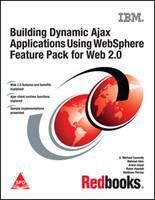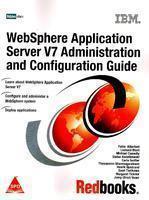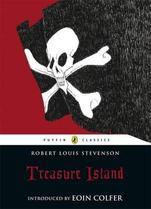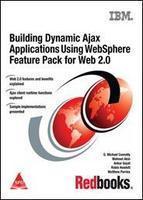 28.0%OFF
28.0%OFF

Download App
 28.0%OFF
28.0%OFF
Building Dynamic Ajax Applications Using WebSphere Feature Pack for Web 2.0
-
ISBN
:
9789350231562
-
Publisher
:
Shroff/IBM Redbooks
-
Subject
:
Others
-
Binding
:
Paperback
-
Pages
:
680
-
Year
:
2010
₹
1025.0
 28.0% OFF
28.0% OFF
₹
738.0
Buy Now
Shipping charges are applicable for books below Rs. 101.0
View DetailsEstimated Shipping Time : 5-7 Business Days
View Details-
Description
This IBM Redbooks publication demonstrates techniques and technologies available through the WAS Feature Pack for Web 2.0 for building dynamic, next-generation Web applications. It covers the three main sub-components including: Connecting to SOA services from a Ajax using lightweight protocols REST and JSON Extending Enterprise Messaging to the Web using Ajax Messaging Speeding up Ajax application time to market using the Ajax Development Toolkit featuring Dojo Web 2.0 FEP on WAS CE 2.0, WAS 6.1, and WAS 6.0.2 are supported.
-
Author Biography
s G. Michael Connolly is an IT consultant at the ITSO, Poughkeepsie Center. He has more than 30 years of IBM software development experience in both distributed systems and the mainframe zSeries®. He holds a BA in humanities from Villanova University. His areas of expertise include TCP/IP communications, UNIX® System Services, EWLM, and WebSphere for z/OS®. Mehmet Akin is a Software Engineer in the Lotus Sametime Core Services team based in the Dublin Software Lab (Ireland). He obtained his degree in Computer Science at the University of Applied Sciences Fulda in Germany as the best graduate and moved to Dublin afterwards in 2007. His areas of expertise are the Dojo Toolkit, Java EE, mobile programming, and Web 2.0 technologies. He is fluent in English, German, and Turkish. Ankur Goyal is an IT Specialist with IBM with the Rational Software Technical Sales team in India. He consults and supports customer solutions on IBM Middleware, open source, open standards, and emerging technologies. He holds a bachelor's degree in information technology from National Institute of Technology, Durgapur, and is also IBM certified for J2EE, DB2, WebSphere, Rational, XML, and SOA. His areas of interest include software development best practices, Eclipse, and integrating Web technologies with the help of open standards. Prior to this role he was part of the IBM Academic Initiative-Ecosystem group, where his team was responsible for building an ecosystem around IBM Middleware in the emerging market of India. He joined IBM in 2004 after gaining expertise in application development as a Software Engineer. Robin Howlett is a Software Engineer working in the Dublin Software Lab (Ireland) with the Lotus Sametime Core Services team. He holds a master's degree in computer science (networks and distributed systems) from the University of Dublin, Trinity College, and is a graduate of the Dublin Institute of Technology (2004). He has worked for IBM since 2007, and also has experience in the financial services and stock trading industry. He has particular interest and expertise in lightweight Web 2.0 technologies, distributed computing, enterprise messaging architecture, data visualization, social networks, mobile development, and open standards. Matthew Perrins is an Executive IT Specialist working for the IBM Hursley Lab Services organization. He is driving the implementation of successful solutions across Europe using Web 2.0 and client technologies. He has worked for IBM since 1989 and has spent the last 15 years working with Java and enterprise solutions with WebSphere and J2EE. He leads the consumer IT practice for the Industry Solutions Lab Services team and is focused on designing and developing solutions that operate between the user and the edge of an SOA. He focuses particularly on Web 2.0, Ajax, and the rich client technologies that operate on the desktop and device-like Eclipse RCP and Lotus Expeditor, Notes, and Sametime. He focuses on the user interface technologies that are strategic to IBM and our customers. Table of Contents Chapter 1. Introduction to Web 2.0 Chapter 2. Feature pack overview Chapter 3. Core concepts Chapter 4. Installation Chapter 5. Application development tools Chapter 6. Ajax connectivity Chapter 7. Java libraries Chapter 8. REST Chapter 9. Ajax client runtime Chapter 10. Web messaging service Chapter 11. Security Chapter 12. Best practices Chapter 13. Rich Internet applications Appendix A. XML schema definitions Appendix B. Additional material
Related Items
-
of



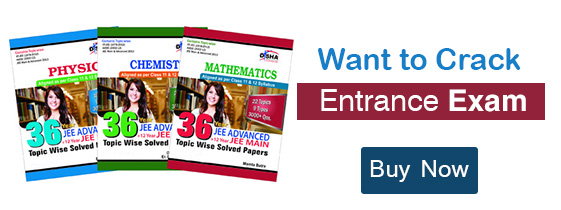








 738.0
738.0





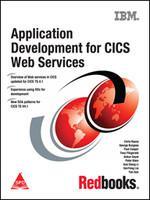
 534.0
534.0
